There are several passerines which are black or almost black which lead to confusion when identifying them. Here will appear the nine most common of Costanera. They are: Solitary Black Cacique, Variable Oriole, Unicolored Blackbird, Chestnut-capped Blackbird, Yellow-winged blackbird, Shiny Cowbird, Screaming Cowbird, White-lined Tanager and Spectacled Tyrant. Physical characteristics are sometimes enough to tell them apart, on other occasions habitat and/or behaviour will help us. We must remember that song would ellucidate the problem easily, but it is not taken into account as a primary difference for two reasons: If the observer is a beginner he/she may be not skilled at bird songs or the bird does not emit a sound at the moment. Anyway, bird voices recorded at Costanera are included.
All of them together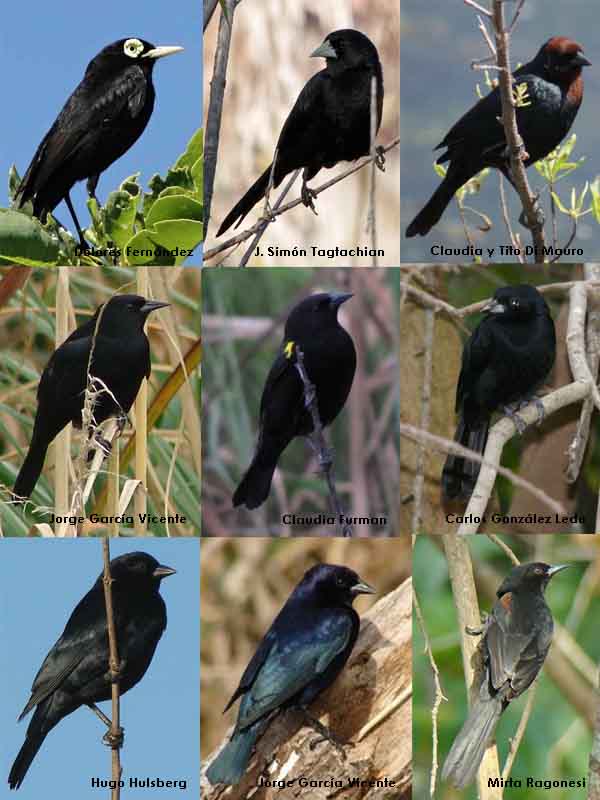
The first three, Spectacled Tyrant, Solitary Black Cacique and Chestnut-capped Blackbird are the easiest ones. They have a conspicuous feature which solves the problem right away.
| Spectacled Tyrant Hymenops perspicillatus 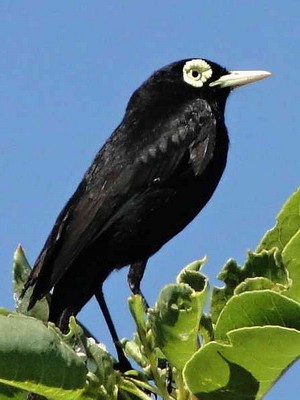 © Dolores Fernández © Dolores FernándezYellowish eye-ring and bill. In trees and open spaces. |
Solitary Black Cacique Cacicus solitarius 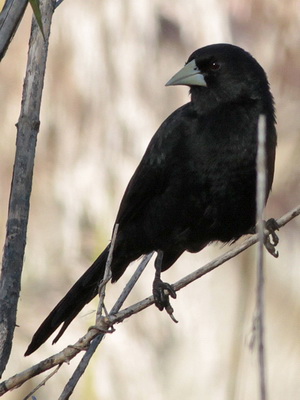 © J. S. Tagtachian Ivory bill. Intrees Listen to voice © J. S. Tagtachian Ivory bill. Intrees Listen to voice© Jorge García Vicente |
Chestnut-capped Blackbird Chrysomus ruficapillus 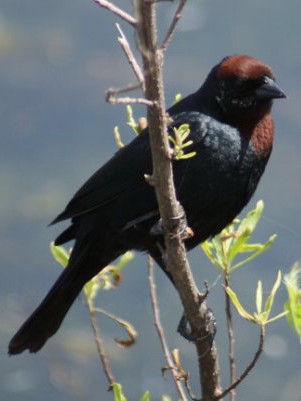 © C. y T Di Mauro Chestnut crown and bib. In marsh vegetation Listen to voice © C. y T Di Mauro Chestnut crown and bib. In marsh vegetation Listen to voice© José Luis Merlo |
The six following birds: Unicolored Blackbird, Yellow-winged Blackbird, Variable Oriole, Shiny Cowbird, Screaming Cowbird (all icterids) and the White-lined Tanager (thraupid) are more troublesome. They also have diagnostic features which if hidden may make identification difficult. Habitat and behaviour provide other clues. Though these birds have been assigned a particular environment, the one they normally frequent, this does not mean that they cannot be seen elsewhere. Size is not taken into account since these six species are almost the same size.
Unicolored and Yellow-winged Blackbirds preferably in marsh vegetation (cattail and reed bedsV, etc.) along the border of ponds and coast of the river
| Unicolored Blackbird Agelasticus cyanopus 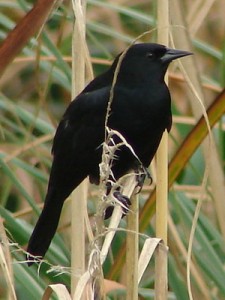 © Jorge García Vicente © Jorge García Vicente |
Yellow-winged Blackbird Agelasticus thilius 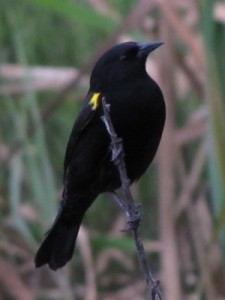 © Claudia Furman Listen to voice © Claudia Furman Listen to voice© José Luis Merlo |
| Two very similar birds of same genus Agelasticus. The difference: yellow spot on Yellow-winged blackbird's shoulder. If for whatever reason this spot is not visible, be patient and wait for the bird to move to solve the mystery. The long and pointed bill distinguishes blackbirds from cowbirds, whose bill is conical. In Costanera the Yellow-winged Blackbird is generally seen in flocks. This is not the case for the Unicolored Blackbird. Both species have sex dimorphism (male and female look different). | |
Shiny and Screaming Cowbirds in more open spaces (bushland and clearings)
| Shiny Cowbird Molothrus bonariensis 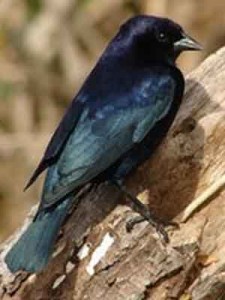 © Jorge García Vicente Listen to voice © Jorge García Vicente Listen to voice© José Luis Merlo |
Screaming Cowbird Molothrus rufoaxillaris 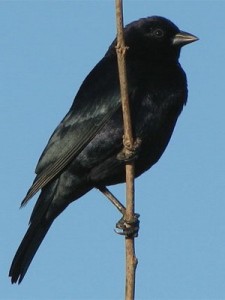 © Hugo Hulsberg Listen to voice © Hugo Hulsberg Listen to voice© Carlos Ferrari |
| Two Molothrus. Shiny Cowbird's plumage has violaceous and bluish tones which Screaming Cowbird lacks. Both have a conical bill. Shorter in the Screaming Cowbird as it (Spanish) name suggests. Both form flocks. The Shiny Cowbird's flock will be "two-coloured" since there is sex dimorphism (the male is black and the female is brown). That of the Screaming Cowbird will be black since there is no sex dimorphism. | |
Variable Oriole and White-lined Tanager associated to trees (bushland, woods)
| Variable Oriole Icterus cayanensis 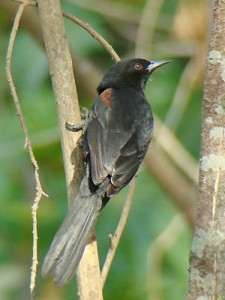 © Mirta Ragonesi Listen to voice © Mirta Ragonesi Listen to voice© José Luis Merlo |
White-lined Tanager Tachyphonus rufus 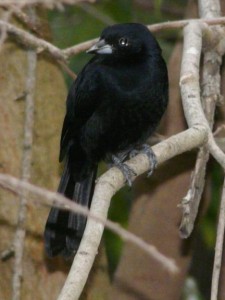 © Carlos González Ledo © Carlos González Ledo |
| Both have distinct features, but among branches they may pass unnoticed. The Variable Oriole has a brown spot on the shoulder and a very long tail. The White-lined Tanager, whitish lower mandible. As far as behaviour goes the Variable Oriole is acrobatic (turns around branches like gymnasts) and may be seen in a twosome. There is no sex dimorphism. The White-lined Tanager is generally seen alone and is easily distinguished from the female which is rufous. | |

